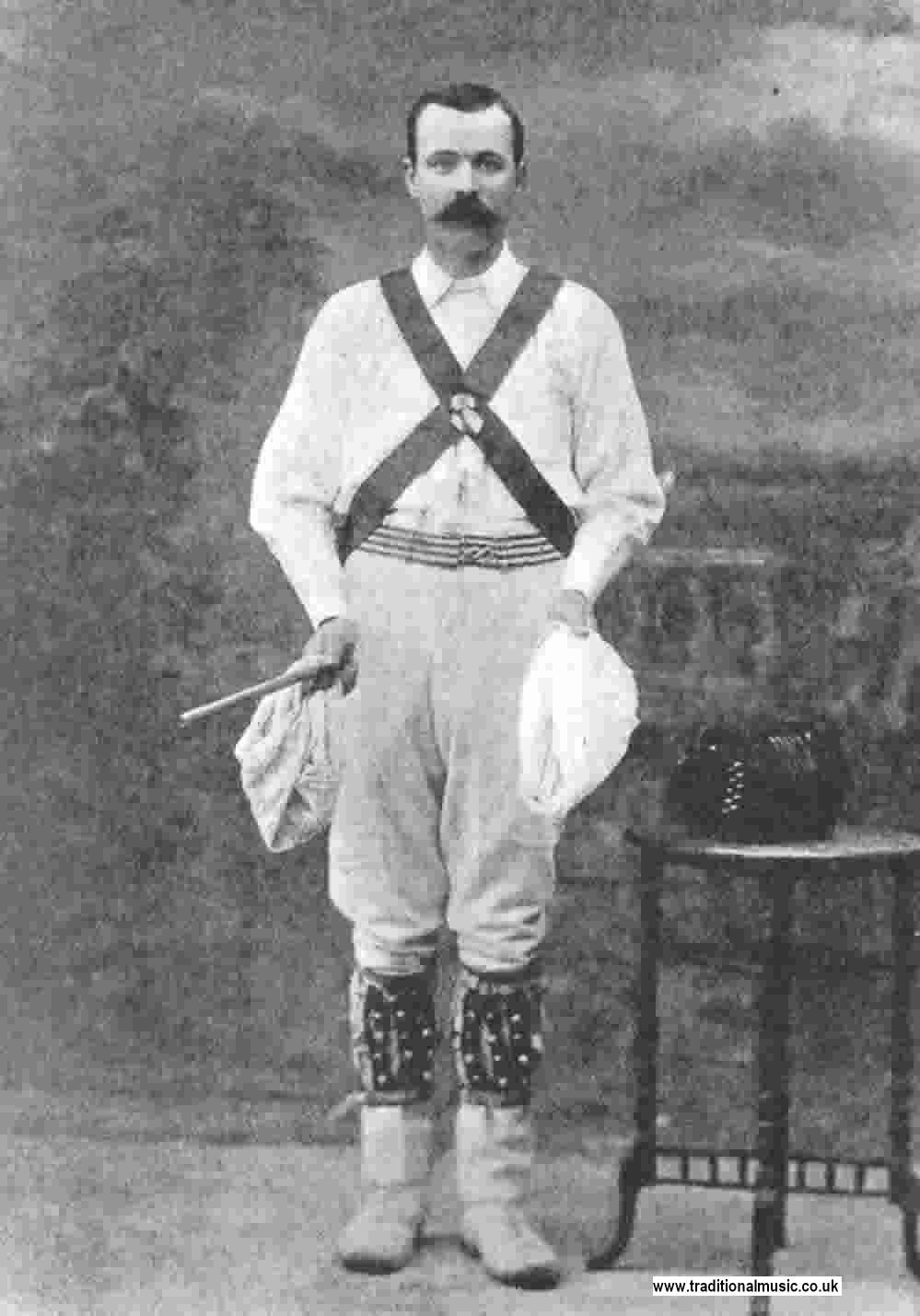THE MORRIS BOOK, Online Version
| Share page | Visit Us On FB |
|
|
||
|
To the wearing of bells, stitched upon thongs and tied to the shin, there would seem to be no exception amongst the Morris-folk, even from the earliest times. The celebrated Kemp, who danced the Morris all the way from London to Norwich in 1599, and whose picture we reproduce, wore his bells in the traditional manner.
The records show that, even in recent times, both treble and tenor bells were worn, each carried by the opposite files of dancers. There are accounts also of bells with four different tones. But nowadays certainly the rule is that bells all of a kind are worn by all the dancers—latten bells, if that be still the correct name for the kind of bell to be found upon the harness that children use when they play at horses. The shin-pad that carries the bells varies to some extent in the details of its construction; the number of bells also varies. Sometimes the vertical strips and lateral ties of the pad are of ribbon or braid; maybe oftener of leather. Sometimes the bells are stitched upon the lateral ties, top and bottom; it is more usual, however, to fasten them on the perpendicular strips. The whole bell-pad is some seven inches square, and is worn midway between knee and ankle. Kimber, as will be seen (plate opposite), wears twelve bells on each leg, in three perpendicular rows of four each.
HANDKERCHIEFS.
Some dancers carry a white handkerchief—the middle finger thrust through a hole in one corner—in all their dances; we have, elsewhere, described the dances as we have seen them performed, with and without the handkerchief. |
||
|
|
||
 |
||
|
|
||
|
MR. KIMBER, LEADER OF THE HEADINGTON MORRIS-MEN (1906) |
||
|
|
||